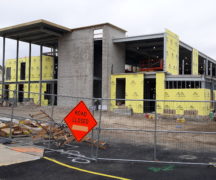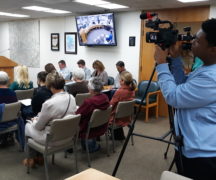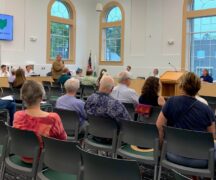By JAN LARSON McLAUGHLIN
BG Independent News
Bowling Green’s rental housing registration program is working. The inspection program is still under construction.
City Council heard the first reading of an ordinance Monday to delay the initial deadline for landlords to submit self-inspection reports for rental housing units.
City officials had received feedback from landlords who said the inspection criteria was too onerous. So council is considering slowing the timeframe for the self-inspections.
Mayor Mike Aspacher asked for an update on the city’s rental registration and self-inspection programs, learning that after a slow start, the registration requirement has seen good compliance from landlords.
City Planning Director Heather Sayler explained that as of Monday, a total of 6,463 rental units had been registered with the city.
“We think we have a pretty good handle on it,” she said, noting that all the rental units the city is aware of have been registered. When the ordinance was adopted, an estimate of 7,200 rental units was floated about, but the fact is that the city does not have an exact number.
“It sounds simple, but just walk downtown and tell me how many apartments are in a building,” she said to City Council.
Sayler pointed out that changes in ownership and use happen regularly – with the city tracking those as they occur.
“It’s a moving target,” she explained.
The initial deadline to register rentals with the city was the end of 2022. No fines were issued for landlords who failed to meet that date.
But while the registration process was deemed a success, the inspection program is still being modified. As of Monday, inspection forms for just over 400 addresses had been submitted to the city.
Sayler explained the need to work with several departments to create the inspection criteria. When talking with other communities that have rental inspection programs in place, officials stressed that the criteria must be enforceable, she said.
So Bowling Green turned to the existing regulations already in place by the Wood County Health Department, plus some additions from the fire chief.
“It’s a really robust list,” Sayler said. She acknowledged that performing the self-inspections could be time-consuming for the larger landlords.
But she added, “We also know it’s pretty important.”
David Drain, whose family has a small LLC that rents property, said he performed an inspection on a single unit rental using the forms created by the city.
“The inspection was not difficult. The checklist is easy to read and the criteria it sets forth are clear,” Drain told council members at Monday’s meeting. “The entire inspection – internal and external – took about 30 minutes. I believe this is a task that could be done by anyone who can read.”
Drain said he saw no reason to delay the inspections for an entire year.
“The inspections are not difficult, but the need to get them done is urgent,” he said. “Every time I go out to campaign, I see obvious and sometimes even dangerous problems with properties that this inspection could rectify or prevent. Let’s just get this done.”
But some landlords think the inspection requirements are onerous.
Steve Green, liaison to the Northern Ohio Apartment Association and owner of Mecca Management in Bowling Green, when contacted last week, said he is not opposed to the city’s new ordinance requiring registration and inspections by the property owners.
Green is, however, concerned about the complexities of the inspection requirements.
“I think we all need to take a step back and take a look at this,” he said.
Green suggested it would be in the best interest of landlords, tenants and the city if the inspection forms were simplified.
Green suggested that the city adopt a true checklist – where items can easily be ticked off – rather than long paragraphs about requirements. Those longer inspection forms should be used when a landlord doesn’t comply with the initial checklist, he said.
“Then they can go after them,” he said of “problem addresses.”
“I’m just looking at this from a common sense perspective,” he said. “It can’t be a book on each unit. It should be a checksheet.”
The inspection forms are available on the city’s website at https://www.bgohio.org/671/Rental-Inspections.
During Monday’s meeting, City Solicitor Hunter Brown said he had reviewed the checklist.
“I don’t think it’s particularly difficult,” he said.
The goal is to encourage compliance while maintaining the integrity of the inspection criteria, Brown said.
The original deadline for initial self-inspection reports was Oct. 1 – on Monday. But Brown had already been asked to push back that date to Dec. 31, 2023. The ordinance given a first reading on Monday would push that back further.
Council member Nick Rubando saw the delays as the city’s effort to “bend over backwards” for landlords.
But Brown said the “goals are for compliance.”
Landlords have voiced concerns about the actual self-inspection forms not being online until Sept. 11. But Sayler explained that the inspection criteria has been posted online at least since mid-July. Plus, the regulations have been in effect since 1986 by the health department.
Brown said the city is prepared to deal with landlords who don’t comply.
“We have a procedure in place to proceed against people who are thumbing their noses at us,” he said.
Aspacher praised the planning office and other city employees for their efforts.
“There’s a tremendous amount of work that has gone into this,” he said.
But the mayor said he is open minded about revisions.
“It’s a work in progress. We are open to modifications,” Aspacher said.





